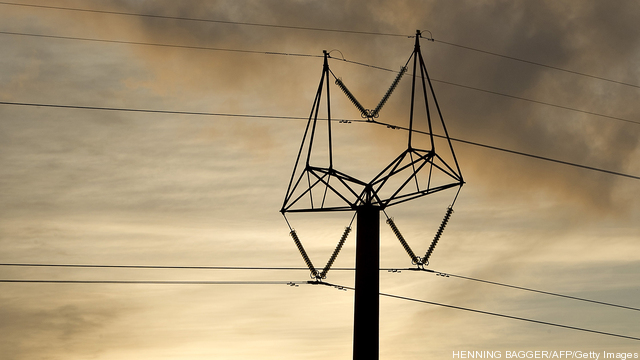Software and controls for energy storage systems are expected to be a key driver for the overall market, report finds September 24, 2015 – Boulder, CO – A recent Leaderboard Report from Navigant Research examines the strategy and execution of 12 leading energy storage systems integrators (ESSIs), including vendor profiles, ratings, and rankings, with the… Keep reading →
Navigant
Installed Energy Storage Enabling Technology Revenue Is Expected To Reach $21.5 Billion Annually By 2024, According To Navigant Research
By Navigant ResearchSign up and get Breaking Energy news in your inbox.
We will never sell or share your information without your consent. See our privacy policy.California Energy Storage Systems Exempt from Interconnection Charges
By Energy Solutions ForumA new California ruling exempts net energy metering-paired energy storage systems sized 10 kW or smaller from interconnection charges. On May 15, 2014, the California Public Utilities Commission (CPUC) issued a decision exempting small storage devices paired with net energy metering (NEM)-eligible generation facilities from interconnection fees. Fee exemption for NEM-paired storage would be tested… Keep reading →
NY state commission asks feds to look into “troubling” relationship between utility and key consultant. The Long Island Power Authority, the target of multiple investigations in the wake of its poor response to Hurricane Sandy, may soon be facing investigation by federal prosecutors as well. A special commission appointed by New York Gov. Andrew… Keep reading →

Utility companies confront security challenges daily, especially those related to securing the North American power grid. Increasingly, they’re responding by implementing comprehensive cyber security plans across their business networks and their generation, transmission and distribution systems.
From broad-based threats against corporate e-mail systems to targeted spear-phishing attacks aimed at nuclear operations, utilities face new challenges regularly. A focus area is the regular increase of vulnerabilities reported in the security of industrial control systems that monitor and control manage the power grid, as noted by the Department of Homeland Security and the media. Keep reading →
US Cities are incredibly diverse in their energy use and their energy politics, but many are trying to use the latest tools to solve similar problems with boosting efficiency and adding new capacity.
TED gave a recent prize to the City 2.0, recognizing that the “smart city” is a vital and important trend not only in the US but across the world. In the energy sector, information technology allows tracking of impacts on the grid, of timing for energy usage or traffic and tracking changes in ways that can allow for more-varied forms of policy and business responses to increasingly pressing problems. Keep reading →
Can Demand Response Programs Help Meet the Renewable Energy Integration Challenge?
By Bruce W. Perlstein
California’s Renewables Portfolio Standard (RPS) requires that, by 2020, all utilities in the state use renewables to generate at least 33 percent of the electricity provided to retail customers. Reaching this RPS target will also play a key role in determining whether or not California will meet its ambitious greenhouse gas emission reduction targets. Many other states are in similar situations: Currently California is one of 29 states (plus the District of Columbia and two U.S. territories) (1) that have RPS targets, and another eight States and two more U.S. territories (2) have adopted renewables portfolio goals (see Figure 1).
Achieving these goals will require a number of states to rely much more heavily on electricity generated by intermittent wind and solar resources. In California, wind and solar generation are expected to provide virtually all of the additional renewable energy needed to achieve the state’s RPS target (see Figure 2). Keep reading →

Ten major natural gas export terminal projects are sparking a debate over the complicated balance between low domestic prices and the health of natural gas producers facing contracting returns on their investment in new production.
Would US exports of liquefied natural gas support an industry that’s struggling to produce the fuel at record-low prices, or would they deprive gas users of the benefits of those super-low rates? Keep reading →

While for many its a time of celebration, this holiday season is making many in the wind industry nervous.
The production tax credit (PTC) for wind energy–the primary federal financial support mechanism for wind, which rewards developers and investors with 2.2 cents per kWh over 10 years–is set to expire in just about a year, on midnight December 31, 2012. Keep reading →

2011 was the year of natural gas.
Production continued to boom while prices continued to stagnate. As the industry began to comprehend this year just how transformative natural gas will be, the public has also become more aware than ever of hydraulic fracturing (“fracking”), the relatively new technology that has unlocked the vast American underground shale plays. Keep reading →

Indications that fierce competition in the global wind turbine industry is about to intensify came with news from the world’s largest wind turbine manufacturer. Vestas abandoned its forecast of €15 billion in revenues in 2015 and said that job losses and restructuring will follow instead.
The Danish manufacturer’s third quarter results signal the challenges ahead as established players seek traction in emerging markets to compensate for oversupply, market expansion slows and the US and EU face potential double dip recessions, just as Chinese companies entice overseas customers with knock-down prices. Keep reading →



